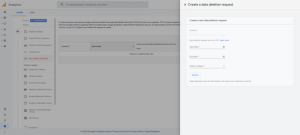Columnist Allan Haims discusses the shifting retail landscape and how brick-and-mortar retailers can stay competitive by offering customers unique omnichannel shopping experiences.
 Retail marketers have long focused on perfecting their omnichannel strategies; however, the rules of consumer engagement have changed. Many major anchor stores are either closing or redesigning their approaches, and the overall mall landscape is changing to meet the needs of a new audience.
Retail marketers have long focused on perfecting their omnichannel strategies; however, the rules of consumer engagement have changed. Many major anchor stores are either closing or redesigning their approaches, and the overall mall landscape is changing to meet the needs of a new audience.
And while shoppers can be reached on a variety of platforms, they remain individuals and prefer a unified experience that engages them in unique ways. Business is not as usual. And, as this year’s holiday shopping season approaches, there are important lessons to learn.
Unique experiences build on brick and mortar’s strength
Even though online sales continue to grow, a recent Deloitte study confirms that consumers still prefer in-store shopping, choosing to make more than 90 percent of all transactions in store.
The fact remains — brick-and-mortar retailers offer shoppers something they want that online retailers just can’t provide: a hands-on experience with products and the ability to take them home immediately. That’s why today’s retail landscape is fertile for brick-and-mortar retailers to nurture shoppers, seeding growth with unique shopping experiences.
Add to the mix that consumers have been groomed to expect — and want — a new, upgraded version of the services or devices they use to make their lives easier, better and more enjoyable (One billion iPhones in nine years is proof). That’s primed shoppers for retailers to connect with them in new ways with an upgraded shopping experience that’s engaging, enhanced and personalized.
For example, Best Buy recently installed a connected home display in the rotunda of Mall of America, showcasing tech-driven home elements in replicated rooms within a mock home. Outfitted with smart products, the “home” gives in-person shoppers a unique chance to interact with the products in a simulated environment and speak with Best Buy and Geek Squad team members on-site.

Best Buy’s Tech Home display at Mall of America
Mobile key to a unified, innovative strategy
Leading brick-and-mortar retailers like Best Buy aren’t drowning in the wake churned by innovative shopping experiences that use technology to connect with shoppers; instead, they’re riding it, using a strategy that also unifies brick-and-mortar and mobile touch points.
With nearly two-thirds of Americans owning a smartphone, it’s no longer just savvy to use mobile to connect the dots of a unified strategy — it’s necessary. Mobile is a must-have tool to engage customers and pull them smoothly along the buying process.
Consider how flip-flop maker Havaianas and retailer Bloomingdales took advantage of the tool to move shoppers from a unique window-shopping experience to an in-store purchase. Street-front windows of Bloomingdale’s New York City store were transformed into an interactive display that allowed shoppers to design customized flip-flops.
Using the window’s interactive touch screen, customers chose colors for the sole and straps and decorations. When finished, shoppers captured a QR code or SMS code on their phones and went inside the store to pick up their orders. It’s a unique approach that leveraged the mobile touch point to deliver a personalized experience.
Commit to engage outside of the box
Transforming a traditional environment also can engage customers in new ways. Putting a new twist on how mall space is used, Westfield Labs launched Bespoke, a first-of-its-kind trifecta of co-working, demonstration and event space located in San Francisco’s Westfield Centre mall.
Focusing on the intersection of retail and technology, Bespoke has been home to many retail tech startups, hosted demonstrations of innovative technology, and provided customizable space for events, workshops and retailer guest speeches. Westfield is also engaging customers digitally, upgrading the food court experience with a pilot project that allows local residents and office workers to order food delivery from the mall via a mobile and web-based service.
Retailers who commit to continually innovating the ways they engage with customers will continue to ride the wave rather than slowly sink in the wake. Home improvement retailer Lowe’s has made that commitment through their Innovation Labs, where they develop what they call “disruptive technologies” to impact customer engagement.
One result of the lab’s out-of-the-box thinking is Lowe’s’ 3-D Holoroom, a digital power tool that allows customers to design and physically experience in 3-D the layout of a kitchen or bathroom they create using Lowe’s products. They can extend the in-store experience by saving the design and links to YouTube 360 videos to their mobile device and sharing the visuals with friends and family members through an app.
A unified strategy can drive the unique and innovative shopping experiences customers want and need to connect with retailers and their products. As innovative retailers like Lowe’s will learn, some strategies and ideas will work; others won’t. But if you’re not even trying to ride the wake by testing new things, you’ll never innovate.
Some opinions expressed in this article may be those of a guest author and not necessarily Marketing Land. Staff authors are listed here.
Marketing Land – Internet Marketing News, Strategies & Tips
(48)









